Butt Lift in Hong Kong
Search and Compare the Best Clinics and Doctors at the Lowest Prices for Butt Lift in Hong Kong
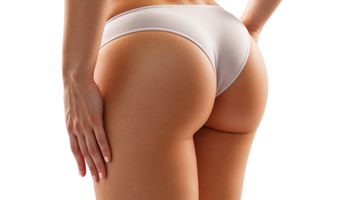
Find the best clinics for Butt Lift in Hong Kong
No clinics available
Egypt offers the best prices Worldwide
Price: $ 600

- Home
- Hong Kong
Compare Before & After Photos of _procedure_photos.phpButt Lift


Front view
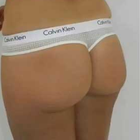

Half-side view
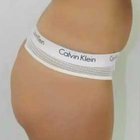

Full-side view
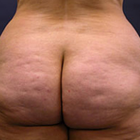
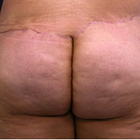
Front view
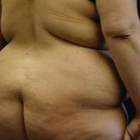
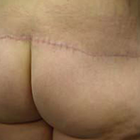
Front view
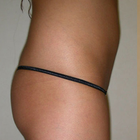
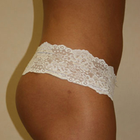
Half-side view
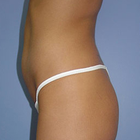
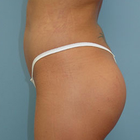
Half-side view
WHY US?
At Medijump, we're making medical easy. You can search, compare, discuss, and book your medical all in one place. We open the door to the best medical providers worldwide, saving you time and energy along the way, and it's all for FREE, no hidden fees, and no price markups guaranteed. So what are you waiting for?

Free

Best Price

Widest Selection

Risk-Free
What you need to know about Butt Lift in Hong Kong
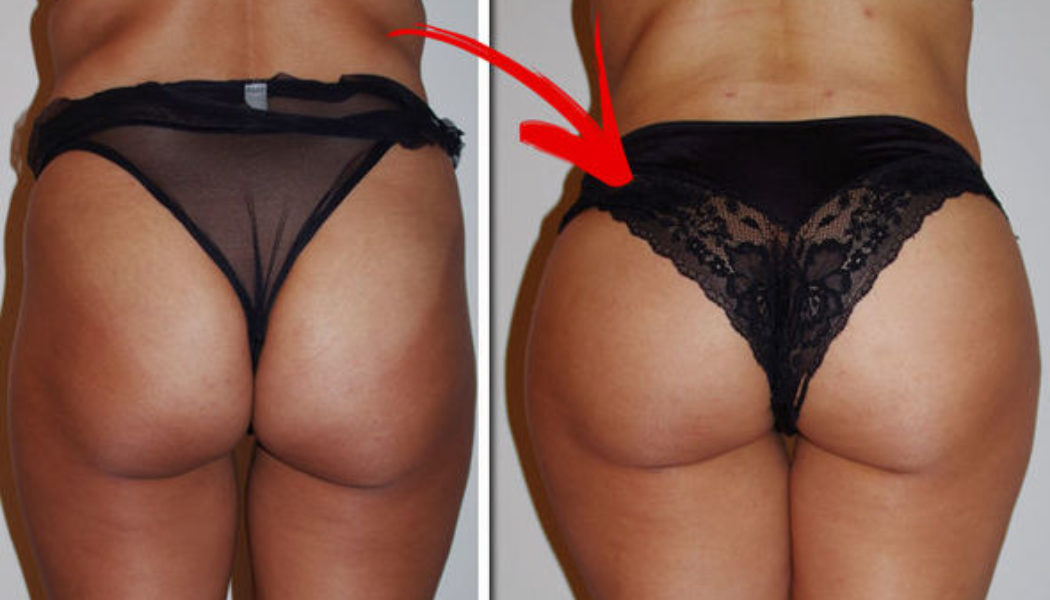
Before you undergo butt lift surgery, you may have loose, saggy, and droopy buttocks making you look and feel older than your age. With butt lift surgery, you can get more rounded and toned buttocks since it reshapes your body contour, making you look younger than your age.
The Butt lift is a surgical procedure to remove unwanted fat or loose skin from the buttocks in order to help reshape them. Implants and Liposuction are often involved and incisions using a cannula can be applied to the crease of the buttocks so there is no visibility of scarring. Butt Lifts are common among those who have lost lots of weight and consequently, the shape of their buttocks has changed. It may be performed as part of a Tummy Tuck (belt lipectomy) or lower body lift to contour the buttocks, groin, thighs, and abdomen. (Another option is to have a Brazilian Butt Lift).
A buttock lift alone won't add any volume to the buttocks. But sometimes, a buttock lift is combined with an augmentation procedure to alter the shape or size of the buttocks with implants or fat grafts. By removing excess skin and fat from your buttocks, a buttock lift can give you a more toned appearance.
What is the cost of Butt Lift in Hong Kong?
When estimating the price of a Butt Lift in Hong Kong, it's vital to acknowledge that the outlay incorporates numerous diverse elements. Initially, the competencies and reputation of the surgeon executing the process have a significant impact on the determination of the cost. Surgeons who are highly skilled and have an excellent reputation often demand higher fees for their proficiency. The surgeon's expertise directly influences the procedure's success and safety, making it a substantial part of the overall expense.
Besides the fee of the surgeon, the expenditure of the medical facility, costs of anesthesia, and clinical tests contribute significantly to the overall expense. These costs can fluctuate dramatically based on the procedure's intricacy and the location where the operation is taking place. Also worthy of consideration is the expense associated with preoperative lab work, post-operative care, and any necessary medication or medical supplies needed during the recovery phase.
What does a Butt Lift Procedure Involve?
Butt lift is most often carried out under general anesthesia. An incision is applied along your lower back from one butt to the other. The excessive skin and adipose tissue are removed through this incision lifting your butts up. The rest of the fat is redistributed and the skin is tightened. Incisions are stitched and surgical tapes are used to provide additional support. Bandages are applied to the wound. Drainage tubes are inserted to remove excess fluid and blood.
Should you get a Butt Lift?
Butt lifts work by removing excess skin and adipose tissue from the site and repositioning the leftover skin and adipocytes. Redistribution of fat and skin changes the contour of your buttocks, making them no longer appear saggy and droopy. Also, it should not be confused with Brazilian Butt Lift which is an entirely different procedure.
Not everyone is a good candidate for butt lift surgery. Discuss your medical history with MyMediTravel, any prescription drugs you are taking, the desired results you hope for, the pros and cons of the surgery, cost, recovery time, risks, success rate or any other query which comes in your mind regarding this procedure.
You might consider a buttock lift if you:
- Have lost a significant amount of weight and your weight has been stable for at least 6 to 12 months.
- are overweight and haven't been able to lose a significant amount of weight through physical activity and changes in your diet.
- Have a normal weight, but want a dramatic improvement in the appearance of your lower body.
- Have a normal weight, but your skin won't contract after liposuction due to poor elasticity related to aging.
How Long Should I Stay in Hong Kong for a Butt Lift Procedure?
Butt lift is a 2-5 hours long surgery and will require at least 1-2 nights stay in the hospital, although in some cases you can be discharged on the same day. Even after being discharged, you have to stay in Hong Kong for at least 10-14 days for follow-ups. During this period, your health is strictly monitored, you are given medicines to help you with pain and to prevent infections. Stitches are removed after 7-10 days. If everything is fine during this time, you are free to travel home.
What's the Recovery Time for Butt Lift Procedures in Hong Kong?
In total, 4-6 weeks of recovery time is required before getting back to your normal routine, so avoid excessive and unnecessary activities during this period. There will be bruising and swelling around the operated area which subsides gradually after a few days. You can start office work 10 days after post-op if your job does not require long periods of sitting time - if it does, just be sure to move around as much as possible.
The recovery time can vary according to your health, environment, and daily routine. You can start driving after 4-6 weeks but do not travel long distances as it will require you to sit for too long. Scars take much longer to fade away. In 4-6 months, you should expect to have fully recovered.
What sort of Aftercare is Required for Butt Lift Procedures in Hong Kong?
The following are some points which should be considered for your aftercare:
- Quit smoking and drinking because tobacco and alcohol slow down blood circulation hence slowing down your recovery.
- Avoid sitting for long periods for at least a week after the procedure.
- Avoid such positions which can put a strain on your scars. It can re-open your wound.
- Change your dressing regularly to avoid infection.
- Take prescribed pain killers and antibiotics to relieve pain and prevent infection.
- Wear some supporting garments for the early few weeks.
- Use scar cream to massage your scars. It will speed up their fading.
- Do not lift children and heavy objects.
- Avoid climbing up the stairs.
- Avoid exercise, gym, swimming, and other strenuous activities for several weeks.
- Abstain from sexual activity until allowed by your doctor.
- Start taking small steps the next day after going through the surgery to prevent blood clot formation.
What's the Success Rate of Butt Lift Procedures in Hong Kong?
Butt lift is a highly successful and long-lasting procedure. An ideal weight should be maintained to keep the results of your surgery consistent. It is found to be far more successful than the Brazilian butt lift surgery, which has lead to patient deaths - unlike the Butt Lift surgery, which has not recorded any fatalities. The vast majority of patients are extremely happy with not only the results of the procedure but with the entire process leading up to and following the surgery.
Are there Alternatives to Butt Lift Procedures in Hong Kong?
The operation should never be the foremost option and consider all other options first. Following are some non-surgical alternatives to butt lift surgery:
- Fillers: these are getting a lot of fame these days. Fillers such as Restylane, Sculptra, etc. are injected into your buttocks, making them look plump and lifted without surgery. They induce collagen production in your buttocks. Sculptra is found to be most effective for this purpose. It is advantageous as it has no downtime.
- Hydrogel buttock shots: hydrogel injections give your butt a rounded contour along with a lift. But they are not usually recommended.
- Liposuction: in this method, adipocytes are removed from your butts through injections to give them a more toned appearance. This fat can be injected at other places of your body if required.
- Exercise: some exercises, such as squats will help to change the shape of your butts, tighten them, and lift them up without surgery.
What Should You Expect Before and After the Procedure
Prior to the Butt Lift at Hong Kong, be prepared for a comprehensive consultation phase. The medical expert will compile an exhaustive medical history, carry out a physical check-up, and converse about your aspirations and anticipations related to the procedure. Transparency regarding your health status and expectations during these consultations is of utmost importance. Some lab tests and medical imaging may also be necessary to examine your general health and determine your eligibility for the procedure. Subject to your health conditions and personal circumstances, guidelines for the pre-procedure phase will be communicated to you. This might involve guidelines regarding food intake, hydration, adjustments in medications, and consumption of substances like tobacco and alcohol.
Another critical element before the procedure is mental readiness. Naturally, feelings of worry or apprehension may arise before the procedure. Engaging in open and candid discussions with your medical expert regarding your apprehensions and expectations can help mitigate such feelings. Instructions about the logistics on the day of the procedure, such as the time to report at the clinic, appropriate attire, and arrangements for travel, will also be shared with you.
Upon completion of the Butt Lift, your condition will be closely observed in a post-operative area until the effects of anesthesia subside. Feeling some discomfort, experiencing swelling, and noticing bruising after the procedure is quite normal. Medications for managing pain and reducing swelling, as well as preventing infection, will be administered. Essential post-procedure care guidelines will be provided to you, which should be strictly adhered to ensure a seamless recovery process. These guidelines usually include instructions for wound care, medication routines, restrictions on activities, and what symptoms of complications to be vigilant about.
What are Potential Risks of Butt Lift?
Just like any operative process, Butt Lift also has inherent risks involved. The degree of potential risks can drastically differ from person to person based on their health conditions, techniques employed during the procedure, and the expertise of the surgeon. Usual risks linked to this procedure encompass adverse reactions to anesthesia, bleeding, infections, and variations in skin feeling. It is crucial to understand that the occurrence of such risks is generally low, and a majority can be lessened by adhering to the post-operative guidelines given by the healthcare professional. For instance, prevention of infection can be achieved through maintaining suitable post-operative wound hygiene, whereas the adverse effects of anesthesia can be minimized through a detailed discussion of your past medical records with your healthcare professional ahead of the surgery.
Although less usual, more critical complications can include a situation such as a fat embolism, which is the blockage of a blood vessel due to a piece of fat breaking away, affecting cardiac activity or leading to a pulmonary embolism. Asymmetry could also occur, where one buttock varies in size or form than the other. However, this is typically associated with the technique used and pre-existing body conditions rather than a specific risk associated with the procedure. If dissatisfaction arises with the aesthetic result, another surgical intervention might be necessary.
Whilst the information presented here has been accurately sourced and verified by a medical professional for its accuracy, it is still advised to consult with your doctor before pursuing a medical treatment at one of the listed medical providers
No Time?
Tell us what you're looking for and we'll reachout to the top clinics all at once
Enquire Now

Popular Procedures in Hong Kong
Prices Start From $113

Prices Start From $208

Prices Start From $931

Prices Start From $76

Recommended Medical Centers in Hong Kong for procedures similar to Butt Lift

- Interpreter services
- Translation service
- Religious facilities
- Medical records transfer
- Medical travel insurance
- Health insurance coordination
- TV in the room
- Safe in the room
- Phone in the room
- Private rooms for patients available

- Interpreter services
- Translation service
- Religious facilities
- Medical records transfer
- Medical travel insurance
- Health insurance coordination
- TV in the room
- Safe in the room
- Phone in the room
- Private rooms for patients available

- Interpreter services
- Translation service
- Religious facilities
- Medical records transfer
- Medical travel insurance
- Health insurance coordination
- TV in the room
- Safe in the room
- Phone in the room
- Private rooms for patients available

- Interpreter services
- Translation service
- Religious facilities
- Medical records transfer
- Medical travel insurance
- Health insurance coordination
- TV in the room
- Safe in the room
- Phone in the room
- Private rooms for patients available
Butt Lift in and around Hong Kong
About Hong Kong
The former British colony became a special administrative region of China in 1997, when Britain's 99-year lease of the New Territories, north of Hong Kong Island, expired. Hong Kong is governed under the principle of "one country, two systems", under which China has agreed to give the region a high degree of autonomy and to preserve its economic and social systems for 50 years from the date of the handover.
Hong Kong welcomes an ever-increasing number of medical tourists each year, many of which travel for Butt Lift procedures. Hong Kong is a well-established hub for medical tourism, although it is better known for its quality and cutting-edge procedures than for cost.
Popular Parts of Hong Kong
Hong Kong is a blend of a dynamic cultural landscape with an astonishing skyline, glamorous shopping, as well as one of the world’s top culinary destinations.
- Victoria Peak (The Peak) offers the best view of Hong Kong’s modern skyline. It is the highest point on Hong Kong Island and the most visited spots by tourists. You can ride the tram to the top where you will find the Peak Tower and Peak Galleria. The peak is covered by a large park filled with incredible greenery.
- Big Buddha (Tian Tan Buddha Statue) is located in Lantau Island. It is one of the largest Buddha statues and took 12 years to complete. It is the perfect place for tourists who wish to get away from the hustle and bustle of the city. Surrounded by forest and ocean, the statue gives an incredible view. The best way to reach the Buddha is by riding the Ngong Ping Cable car which will take you on a spectacular ride over the forest.
- Wong Tai Sin Temple is one of the most popular temples in Hong Kong. It was named after the famous monk of yore, Wong Tai Sin. It is said that he has the ability to punish evils, heal the wounded, rescue the dying, and grant whatever is requested. The temple is also known as Sik Sik Yuen and has a traditional Chinese temple style.
- Temple Street Night Market is the best night market for tourists. Starting at 6.00 pm, it is the place to go if you want to taste Hong Kong’s street food. You can also find vendors selling gadgets, trinkets, clothing, household goods, jewelry, and traditional Chinese crafts. The place is brimming with atmosphere and it has served as the backdrop to many movies.
- Hong Kong Disneyland is a wonderful world for any Disney lovers. The park is divided into seven lands: Adventureland, Grizzly Gulch, Main Street, Mystic Point, Fantasy Land, Toy Story Land, and Tomorrowland. Here, you will find various adventures, parades, and musicals. In the evening, you can watch the fireworks over the castle.
- Star Ferry is a beloved icon of the city. It is said that your visit to Hong Kong will never be complete without cruising on the famous ferry. You can see the sparkling landscape of the city while enjoying the refreshing breeze.
Weather and Climate in Hong Kong
Hong Kong’s weather is influenced by the monsoon subtropical climate. The temperature is mostly mild all year round. May to September are the warmest months with an average temperature of 33 °C while mid-December to February are the coldest months with the temperature falling to 10 °C. Spring starts from March and ends in early May and the weather during this season is pleasant with many sunny days, but you can also have foggy, rainy, and stormy days.
The summer in Hong Kong is hot and humid with a perpetual threat of rain showers, thunderstorms, and sometimes even typhoons. Summer lasts for around four months from May to September. With August as the wettest month in the city.
The best time to visit Hong Kong is in the autumn, starting from October to early December when the days are generally sunny and the temperatures range from 22 °C to 28 °C. Winter is the holiday season in the city and the average temperature is around 16 °C to 18 °C but it can drop under 10 °C.
Getting Around in Hong Kong
The main gateway to Hong Kong is the Hong Kong International Airport. The airport is built on reclaimed land on the island of Chek Lap Kok and it serves international destinations to almost every major city in the world, including, Dubai, Amsterdam, Seoul, Canada, Singapore, and Sydney. For affordable travel, budget airlines such as AirAsia, Eastar Jet, and IndiGo are available. There are a wide variety of public transport services to and from the airport. The best options are Airport Express, public buses, and taxis.
To get around Hong Kong, it is best to purchase Tourist Day Tickets which gives you unlimited access to the main MTR and certain Rail lines for HK$65. If you are planning to stay longer in the city, the Octopus Card will be a big help. The card is reusable and can be used for almost every public transportation mode and you can buy the card for HK$150.
One of the fastest and easiest ways to get around the city is by the MTR (Mass Transit Railways) and it is one of the most advanced metro systems on the planet. The MTR operates 11 lines from 06.00 am to 01.00 am. The fare ranges from HK$3.6 to HK$52.6 depending on the distance.
The public bus is a great way to explore Hong Kong, especially the south side of the island and the New Territories. Most buses are double-decker and air-conditioned and it is an affordable way to get around the city and the fares will vary based on the distance traveled. Other public transportation modes such as tram and ferry are also available.
If you need a more flexible way of travel, taxis are easy to find and offer excellent value. There are three types of taxis, the red taxis operate throughout the city except for Lantau Island and the fares start at HK$24. The green taxis only operate in the New Territories and the fares start at HK$20.50. The blue taxis serve Lantau Island and the fares start at HK$19.
Tourist Visas in Hong Kong
Citizens of around 170 countries and territories may visit and stay in Hong Kong without a visa for up to 180 days. Other countries not listed in the visa-free entry such as Albania, Armenia, and Cambodia need to apply and obtain a visa before entering the country. All visitors must have a passport valid for at least one to six months beyond the date of entry to Hong Kong. Visitors can apply for a visa from their nearest Chinese embassy or consulate.
Additional Information
- Local Currency: The official currency is the Hong Kong Dollar. US$1 converts to HK$7.78.
- Money & Payments: Tourists can find ATMs almost everywhere, and most ATMs are linked up to international money systems such as Maestro, Cirrus, and Visa Electron. Credit cards are widely accepted. Tipping is generally not expected and restaurants usually add 10% to 15% service charge to your bill.
- Local Language: Most people in Hong Kong speak Chinese (Cantonese and Mandarin). However, English is also widely spoken since it is one of the government official languages.
- Local Culture and Religion: Many people in Hong Kong either follow Buddhism, Confucianism, or Taoism. Christianity is also one of the major religions in the city. Other religions such as Islam, Sikhism, Hinduism, Judaism, and the Bahá'í Faith are also freely practiced.
- Public Holidays: Hong Kong celebrates major religious holidays such as Lunar New Year, Ching Ming Festival, and Christmas.
Popular Searches
- Plastic Surgery in Thailand
- Dental Implants in Thailand
- Hair Transplant in Thailand
- Breast Augmentation Thailand
- Gastric Sleeve in Thailand
- Gender Reassignment Surgery in Thailand
- Laser Hair Removal in Bangkok
- Botox in Bangkok
- Dermatology in Bangkok
- Breast Augmentation in Bangkok
- Coolsculpting in Bangkok
- Veneers in Turkey
- Hair Transplant in Turkey
- Rhinoplasty in Turkey
- Stem Cell Therapy in Mexico
- Rhinoplasty in Mexico
- Liposuction in Mexico
- Coolsculpting in Tijuana
- Rhinoplasty in Korea
- Scar Removal in Korea
- Gastric Sleeve in Turkey
- Bone Marrow Transplant in India
- Invisalign in Malaysia
- Plastic Surgery in the Dominican Republic
- Tummy Tuck in the Dominican Republic
- Plastic and Cosmetic Surgery in Poland
- Rhinoplasty in Poland
- Hair Implant in Poland
- Dental Implants in Poland
- IVF in Turkey